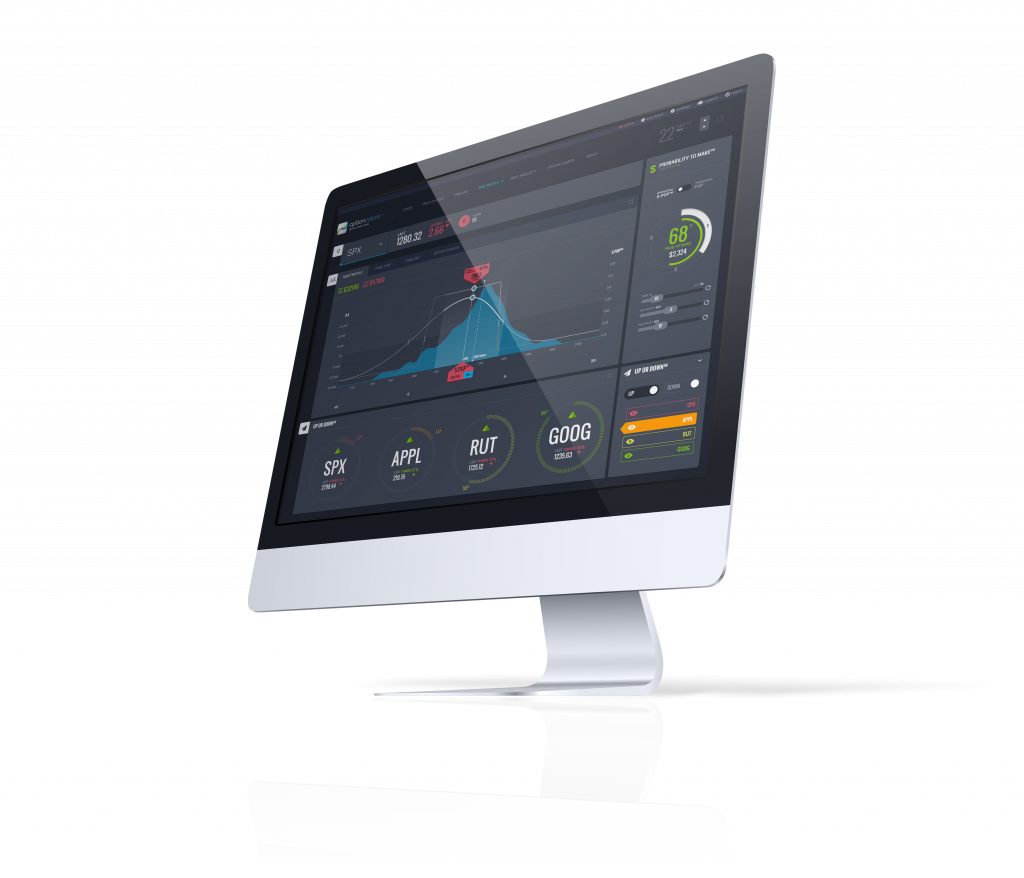Backtesting stock options has been around since options trading began in 1973, but the methods of backtesting are constantly evolving. In this article we’ll be discussing the differences of traditional backtesting and the instant backtesting in OptionColors’ Tsunami, a patent-pending feature.
Traditional Backtesting
One of the oldest well-known options trading platforms is Optionvue, founded in 1983 by Len Yates. Len was one of the first pioneers in the industry of options trading software.
Optionvue, which still exists today, contained one of the first manual backtesters for options traders. A user could change the data of the option chains to the past, build trades and move dates forward to paper trade a few months of time within hours. This method later appeared in other options software with slight variations and progressed with modern-day designs.
Although this form of backtesting was helpful, it was very time consuming. One could spend weeks of time to gather some basic information.
Automated Backtesting
Starting around 2010 automated backtesting tools began to surface around the net. Charting software became readily available to the retail developer, which led to more advanced options trading tools.
This was a significant time in history for the stock market because, what used to be entirely controlled by brokers, became a market place full of software developed by smaller companies. Now, there are hundreds of stock market related programs available to the retail trader, some as powerful as hedge-fund tools, which have been kept secret for so many years.
Although there are many different automated and manual options trading backtesters on the market today, they all have one thing in common. They build an options trade at a past date, using historical data and then move the date forward, again, accessing historical data.
Problems with Traditional Backtesting
There are lots of benefits to backtesting, but there are also some problems with it that traders are not always aware of.
Historical Trades vs Future Trades
One problem with backtesting is that the historical trades that are tested are not the same as potential future trades a trader will face. There are many variables that could be different, rendering the backtest irrelevant to the future.
For example, let’s say an options trader wants to backtest an iron condor strategy. A typical method could be to backtest the iron condor over a lengthy period of time such as 5 years. The user will create a set of rules, such as starting each trade at 30 days out from expiration, along with some adjustment parameters.
After the test, the user has an idea of how the iron condor strategy performed for that period of 5 years, according to the data used and rules applied.
The problem is that moving forward, the trader may never trade the same iron condor again because there are many variables that are forever changing. In the future, the underlying may never be trading at the same price, same volatility level, same news, same fundamentals, same traders behind the ticker, same price or volatility action, same management of company, etc. The same DTE and deltas of the trade may not be available either. Since the same iron condor will not be traded in the future, it’s debatable if the backtest is really helpful to a trader. This is one reason why all software and brokers use disclaimers about limitations of backtesting and how it relates to future performance.
Curving the data
Another common problem with backtesting is fitting the backtest into the historical data, so the outcome is better than reality. Although people do not intentionally curve their data, it happens because traders naturally want to make their trading systems the best they can be.
With manual backtesters it’s too much work to create enough backtests to not curve data. With automated backtesters it’s tough too. It’s easy to miss a day or two with automated backtesting tools that would drastically change the backtest results. Automation makes things faster, but current solutions are still not quite there.
Tsunami™ Invention by OptionColors
OptionColors provides clients with multiple methods of backtesting. We have manual backtesting, automated backtesting and our Tsunami invention, which performs the industry’s first “real-time” backtest. Let us explain.
Real-Time Backtesting
Instead of rebuilding a totally different trade than the client’s current position at a past date, the Tsunami invention (patent-pending) brings past price moves to the current date, to instantly backtesting the user’s real positions. Since OptionColors tests the position in “real-time”, we believe our method of testing a position is far superior than any other method to backtest, since we test the actual position and not a very different one.
One-Second Testing
Not only does OptionColors test the true position, but testing of many years, is done in less than one second on average, making it the world’s fastest “real-time” backtest.
Now, a user can test the correct delta, correct underlying price, correct IV level, all with a single mouse click. There’s no need to apply irrelevant backtests to one’s trades when you have access to Tsunami.
Does Not Skip Over Max Drawdowns
Unlike traditional methods of backtesting, Tsunami does not “skip over” any max drawdowns, which helps the “curving data” issue. Every price-move is included in the tests, so not a single large or small price move is missed. In tradititional backtesting, large drawdowns are often-times skipped entirely, skewing the results to a positive outcome, but Tsunami shows things how they really are – yet another reason our invention is a superior method to backtest options positions.
Test Unlimited Strategies
Another improvement upon traditional backtesting is that Tsunami can test any position whatsover, where automated backtesting cannot. Tsunami has no limits. Create and instantly backtest any stock and options positions in one second.
Calculates Statistical Probabilities
Tsunami not only performs a “real-time” backtest, but it also calculates statistical probabilities, making the traditional POP method obsolete.
OptionColors’ clients love Tsunami – the new industry standard.





